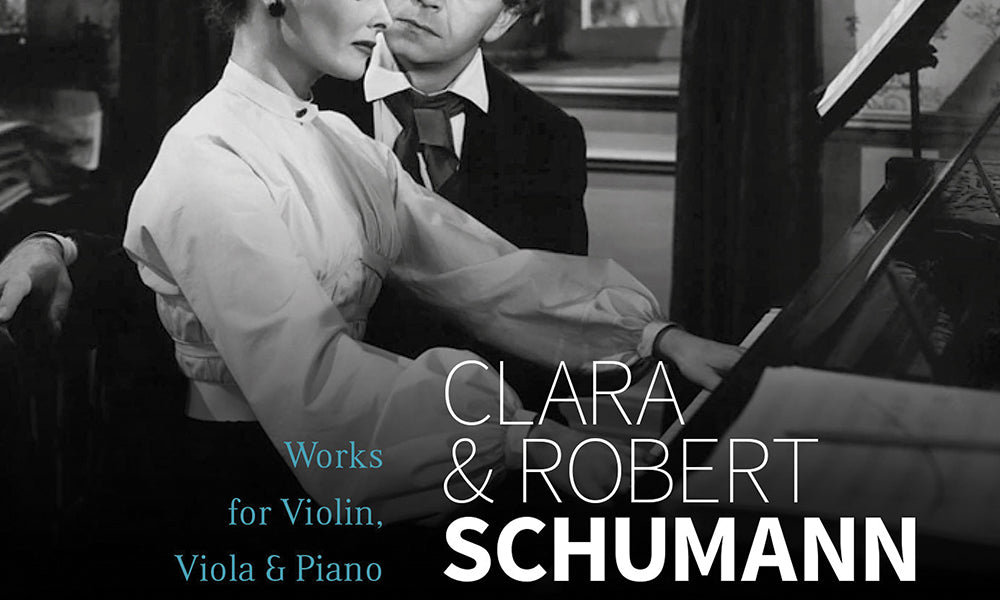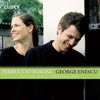
Music Web International: Clara & Robert Schumann, Nurit Stark & Cédric Pescia
Schumann’s second sonata for violin and piano was written a few weeks after the first. The composer declared: ‘I didn’t like the first violin sonata, so I wrote a second, which I hope turned out better’. Clara certainly liked it, finding it ‘wonderfully original, with a depth and magnificence that I have hardly ever known before’. Also set in a minor key, this later work is very different in character to its predecessor, Schumann shedding brooding melancholy for a more upbeat, exuberant and energetic focus. It was completed between October and November 1851, but not published until September 1853. Its dedicatee was Ferdinand David of Mendelssohn Violin Concerto fame but it was given its first public performance in Düsseldorf by Clara Schumann and the Hungarian violinist Joseph Joachim. I don’t subscribe to the opinion of some that these sonatas display the symptoms of a composer lacking inspiration in the final years of his mental decline. For me, they are brilliantly constructed, offering a wealth of inspiration, innovation, ingenuity and compositional flair. I’ve always had a preference for this sonata, cast on a grander scale than the first, and the recording I’ve always turned to has been the Christian Ferras/Pierre Barbizet on DG 437 949.
Stark and Pescia certainly give the older recording a run for its money. These players capture all the drama of the opening movement, from the very first declamatory chords, which assert themselves with striking potency. Aside from all the drama, the lyrical sections have a burning intensity. A scherzo-like movement follows, which sounds as though it comes from the pen of Brahms. It is delivered in a joyous and extrovert manner. Stark’s pizzicatos ring out warmly in the third movement, a set of variations in G major on a theme reminiscent of a Bach chorale I cry to thee in deepest need. There’s plenty of drama and excitement in the finale, setting the seal on a captivating performance that would be hard to beat.
As a contrast to the more weighty narrative of the Sonata, Clara Schumann’s Three Romances offer an element of composure, and an opportunity to cleanse the palate. They were written in 1853, at the end of her compositional life, and dedicated to Joachim. Stark and Pescia clearly have great affection for these short pieces and invest them with charm, delicacy and tenderness.
The four character pieces that comprise the Märchenbilder or Fairy Tale Pictures, like the Second Violin Sonata, were also composed in 1851. They were dedicated to the German violinist and conductor Wilhelm Joseph von Wasielewski. Schumann was Director of Music in Düsseldorf at the time. Nurit Stark turns her hand to the viola this time, from which she draws a rich, full-bodied tone. The two outer movements are eloquent and expressive, framing two inner movements of a more energetic and vigorous character, realized with formidable virtuosity. What draws me to this performances is the sheer range of imagination, variety and artistic expression these artists bring to the four brief pieces.
The Siemens-Villa, Berlin offers a warm, resonant acoustic and both instruments are balanced effectively in the mix. Excellent annotations are provided by Claves in French, German and English. One cannot fail to be won over by the spontaneity and enthusiasm of these two artists and, for anyone purchasing these recordings, the rewards are immense. You can get a taster from Youtube.
Article's source: Music Web International, by Stephen Greenbank, 2015
Online
HR Music
Qobuz
E-Onkyo
ProStudioMasters
Mora
HD-Tracks
More links
More articles about this artist
Cédric Pescia's website
Buy this album










Commentaires
0 Commentaires